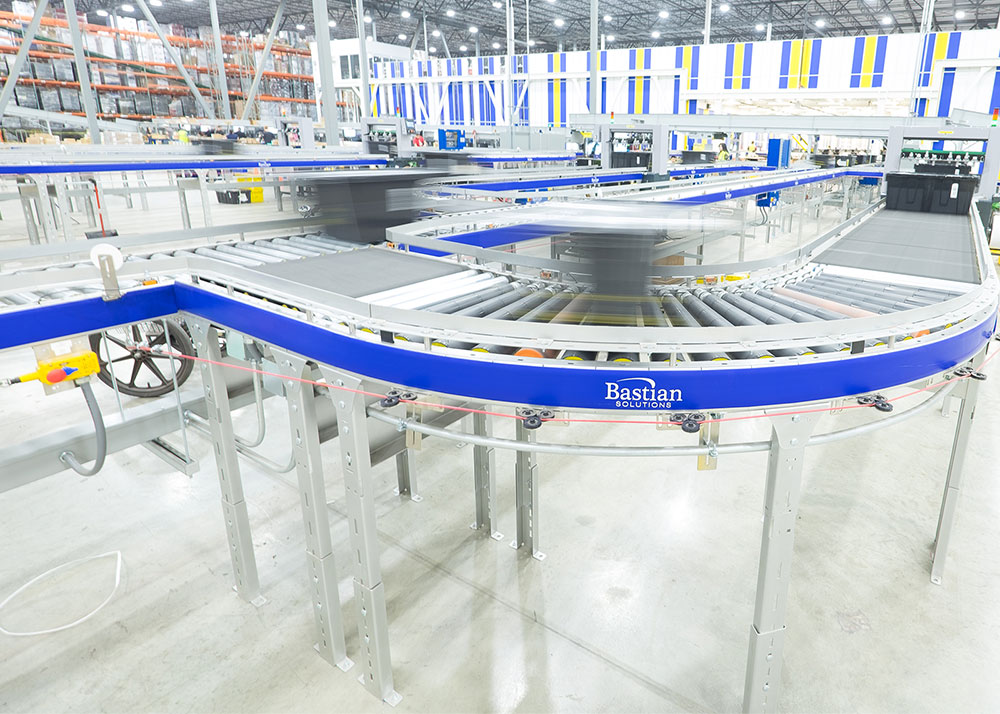
3 Tips on Successful Automation Integration
Sheila Dooley | 30 November 2022
Determining which material handling automation is best for your warehouse is challenging. From sifting through the vast amount of automated equipment options to identifying immediate and future operational needs, it’s not a task accomplished in a business day. And truthfully, the challenge doesn’t end once you’ve selected your new system.
The next objective is to ensure the technology fits and optimizes your operations. Seamless integration and thorough utilization of the new system isn't automatic. It takes time, communication and planning. Before implementing any solution, consider these three tips for successful automation integration.
1. Understand the Automation and Appropriately Define Requirements
“Understanding the automation and appropriately defining the requirements” may seeing may seem obvious, but if not properly followed through it can lead to real headaches further down the line.
Companies looking to integrate automation should think through every step of the process being automated and the role the equipment will play. Gathering data on the functional operations will help ensure the solution is both streamlined and effective. This means avoiding over engineering and overextending the technology outside its capabilities. Most importantly, stopping to answer these points means avoiding unnecessary expenditures.
Working with various companies across industry verticals, we’ve noticed that this step in the process helps not only to refine the proposed process and automation selection but also to reaffirm the solution. It’s a lot easier to stop and switch technologies at this stage than after implementation. An alternative customized solution could also be introduced at this stage.
Understanding the role of the selected technology in its application should be a group project. The most successful projects ensure obtaining buy-in from various stakeholders. Not getting alignment early on from the various groups impacted by the integration can lead to delays, unmet business objectives, schedule changes, cost increases, functionality misalignment.
At a minimum, consider including the following groups in automation technology application discussions:
- Engineering
- Operations
- Stakeholders who manage interfaces to/from the host system
- Technical experts familiar with the network architecture, security requirements, database, operating system, etc.
2. Implement Knowledge Gained from Previous Projects
Past knowledge is a great contributing factor. To be clear, this doesn’t have to be exclusively related to integrating other material handling equipment.
Any past experience in implementing something new that would impact people as well as process can help highlight key details that could be considered in the new project. This could be selecting new ERP software or even adding a new SKU to inventory.
Below are just a few questions to ask internally that could garner valuable feedback.
- What groups were involved? What groups were not involved that should have been? What groups were involved that did not need to be involved?
- How often did you meet? Did that prove to be a good use of everyone’s time? Why or why not?
- Were the right people involved at the right stages of the project?
- Did the last project have a select few champions or experts or was everyone expected to know every detail?
- Was enough time and thought given to define the scope?
- Was the overall timeline realistic?
- Was the right training provided to the right people at the best time for success?
- Were the requirements clearly understood and communicated?
What would you go back and change to have made that project better?
3. Get Operator Input
When diving into the process of designing and integrating a new automation system, it can be easy to forget to include those that will be working directly with the new technology. Involving these individuals is imperative to the system running as it was intended.
On a new system that will have all new operators, get members of the operational management team on board. While IT and engineering both provide invaluable contribution to the design and functionality of the system, the operations team brings the reality of use and performance from the end users performing the actions.
When considering how operators will interact with the automation, remember to look beyond the ideal end result. A perfect adherence to directions and performance rates is the best-case scenario, but not always realistic.
Further refine your automation system by keeping in mind how these employees are incentivized. The primary two methods are accuracy and productivity. With that in mind, it’s easy to see how certain decisions become a question of benefits versus time. Tasks or steps that slow an operator down, like counting inventory in a tote, may be rushed or skipped altogether in favor of time. Knowing this mindset makes it easier for you to decide what’s acceptable for your operations. With this feedback, if accuracy is imperative, adding a step to scan the tote can help in the verification process and benefit the accuracy of the entire system.
Successful Integration
Selecting the technology and designing a proposed system is one part of a larger process. Remember that seamless integration and full utilization of the new system aren’t a given. Using the aforementioned tips can help ensure that an ideally-designed system appropriately addresses business needs.
Ready to talk about your solution? Bastian Solutions experts leverage real world experience to provide automation solution recommendations that are the right fit for your specific operations. Using a brand agnostic approach, our experts strive to select the right technologies for the job.
As a Business Analyst for Bastian Solutions, Sheila works as part of the sales team for the software division working with prospects and customers to understand their software requirements. Prior to joining Bastian, Sheila worked as a project manager for a consulting firm helping customers in a variety of industries with warehouse management system requirements, documentation and implementation.
Comments
No comments have been posted to this Blog Post
Leave a Reply
Your email address will not be published.
Comment
Thank you for your comment.